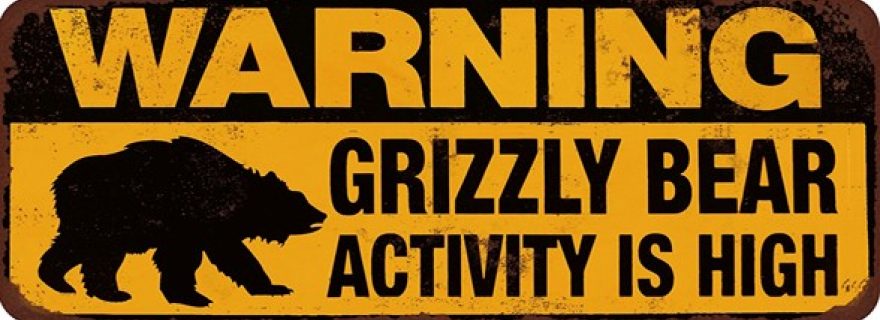Bears and Predictions
William James used a story about a bear to make an important point about emotions. What does this story tell us about the predictive mind?
The story begins with a hiker in the woods.
“A hiker is walking in the woods, he sees a grizzly bear, so he runs away.”
He sees the bear, feels the fear, runs away. There doesn’t appear to be much thinking other than “BEAR!!! RUN!!!!!” We can imagine a brain processing the sensory information, feeling the emotions and taking the required action.
BEAR > FEAR > RUN
EVENT > EMOTION > ACTION
This is obviously a simplification, but it’s common for people to have an idea that brains work this way. Unfortunately this model isn't accurate. We can demonstrate this by altering the story:
“A wildlife photographer is walking in the woods, he sees a grizzly bear and he takes a photo.”
He sees the bear, feels excited, takes the picture. Again the thinking doesn’t seem very complicated: “GREAT, A BEAR!!!!” however the emotion and outcome are completely different. This shows us that the bear does not cause fear – our thoughts about the bear do: our thoughts are where our emotions come from. If we examine both thoughts we can see something else; the exclamation caused by the fear is not the actual thought. More accurately the thought was “I am going to be killed” or in the second example “I could get a great photo”.
Both these thoughts have one very important thing in common: they are predictions.
The model looks better like this:
EVENT > PREDICTION > EMOTION > ACTION
Again this simple idea is still not accurate. If we alter the story once more….
“A hiker is walking in the woods, he sees a grizzly bear, but he doesn’t notice the birds, bushes, flowers, pebbles etc”
This is no longer a good sounding story as we don’t care about the birds etc, however that is exactly the point: we only notice the things we have already decided are significant. Bears are significant, we have evolved to be sensitive to things in our environment that have big fangs and claws, and this has served us well for thousands of years.
The model is improved if it looks this:
SELECTION > PREDICTION > EMOTION > ACTION
Pavlov’s famous experiments with dogs show us that we are not alone in making predictions. His dogs were fed after hearing a bell. After a few instances of this, the dogs salivated immediately after hearing the bell – they did not need to see or smell the food to produce that physiological response. For the dogs the sound of the bell is significant because it predicts the appearance of food. This triggers the physiological response required for eating; salivation. For the hiker in the woods the physiological response is the release of adrenaline, experienced as fear, to prepare the body to take action. Our emotions are the physiological responses our body needs to prepare for the action required as a result of our predictions.
Making predictions is central to every aspect of our individual selves and our civilisations. The history of the development of scientific theory is about finding ways of making accurate predictions. Narrative structures are designed to manipulate our predictions in playful, sometimes educational ways. When a composer resolves a melody in a way he led us to predict we are calmed and reassured, when he unexpectedly takes us somewhere new we are thrilled and excited. We organize our societies into groups dedicated to predictions in specific areas, like doctors or engineers, we give them training to improve their accuracy, we give them qualifications so we know they are trusted. We strive constantly to improve our ability to predict and reward those who excel at it with wealth and power.
Being able to predict what might happen in our environment and then choose the best action is the purpose of the brain, and our species excellence at this is the reason we are so much more successful than any other.


0 Comments